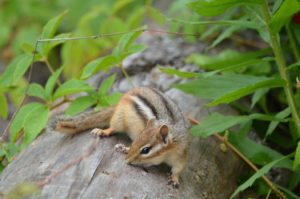
Wildlife
Why understanding animal behaviour is key for biodiversity conservation
By understanding why animals do what they do, we can better protect them while making people care
- 1906 words
- 8 minutes
Kids

As one of Canada’s most well-loved animals, the red fox can be characterized by its beautiful colour and white-tipped fluffy tail.
Common name: Red fox
Scientific name: Vulpes vulpes
Type: Mammal
Diet: Omnivore
Group name: Skulk or leash
Average weight: 3.6 to 6.8 kilograms
Average length: 90 centimetres to 1.2 metres
COSEWIC Status: No status
Red foxes are not always red. Other common red fox colours include brown, black and silver. Even foxes that come from the same litter can be different colours.
Fast and light on their feet, red foxes are also known for their bushy tails, which they use for balance or to wrap around their bodies in cold weather. They also use their tails to communicate with other foxes. Red foxes have pointy, black-tipped ears, and their hearing is acute; they can detect the squeak of a mouse from 30 metres away. Their chests and tail tips are white and they have dark “stockings.”
Red foxes’ eyes are adapted for night vision, doubling the intensity of the image most other animals see. If you shine a light into a fox’s eyes at night, their eyes will glow green because of the mirror-like membrane behind their retinas. Foxes are capable of making a wide range of sounds, but the one you’re most likely to hear is a blood-chilling scream. It’s thought that females make this sound during mating season to attract males.
When fox pups are young, their parents will bring home small game for them to play with. This is how the pups learn hunting skills. In children’s stories, red foxes have often been depicted as cunning or deceitful; in fact, they tend to be shy, secretive and nervous by disposition.
Red foxes mainly dine on small mammals, including voles, mice, lemmings, squirrels, hares and rabbits, but they also eat plants and bird eggs.
Red foxes are one of Canada’s most widespread mammals, found in all provinces and territories. They are comfortable in many habitats, including forests, grasslands, mountains and even deserts. You’ll also find them around farms, suburbs, cities and towns.

Wildlife
By understanding why animals do what they do, we can better protect them while making people care

Travel
From South African penguins and Canadian bears to Australian wombats and Bolivian pumas, Robin Esrock introduces inspiring wildlife sanctuaries where volunteers make all the difference

Wildlife
As foxes move from the forest to the city, they show more doglike traits and appear to be naturally self-domesticating in the U.K. — but the same isn’t happening here at home

Wildlife
There’s something about foxes

Wildlife
By understanding why animals do what they do, we can better protect them while making people care

Travel
From South African penguins and Canadian bears to Australian wombats and Bolivian pumas, Robin Esrock introduces inspiring wildlife sanctuaries where volunteers make all the difference